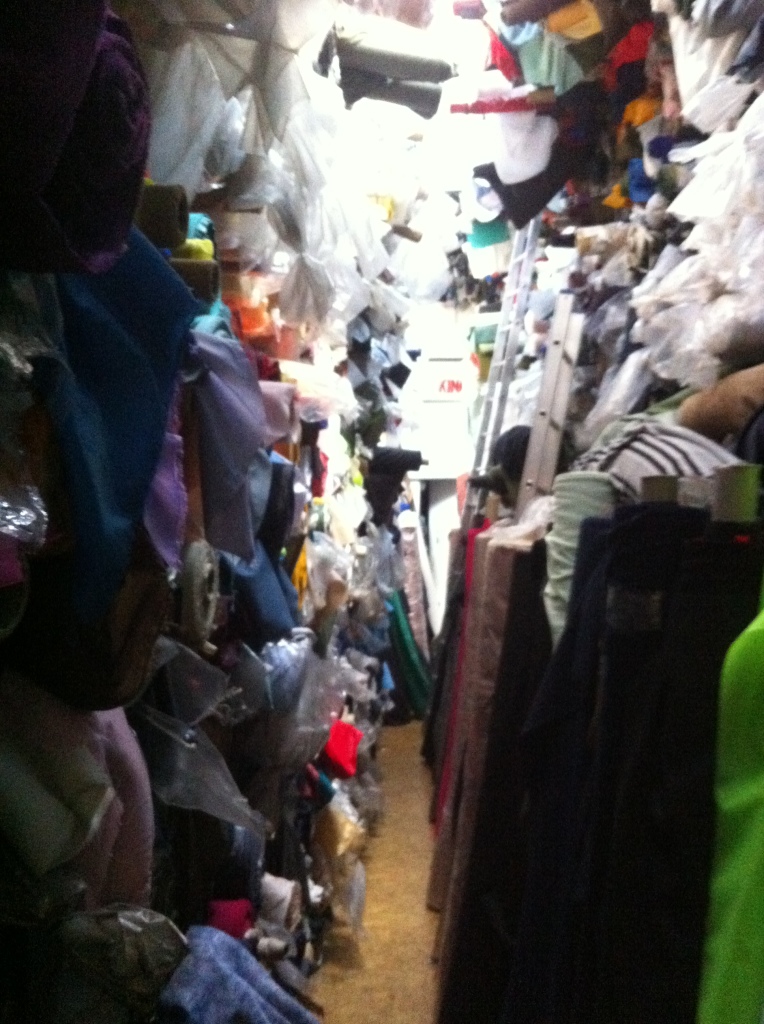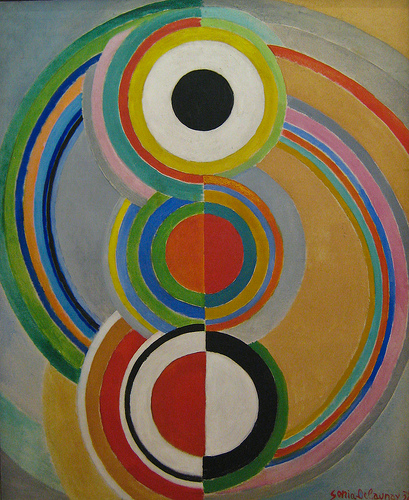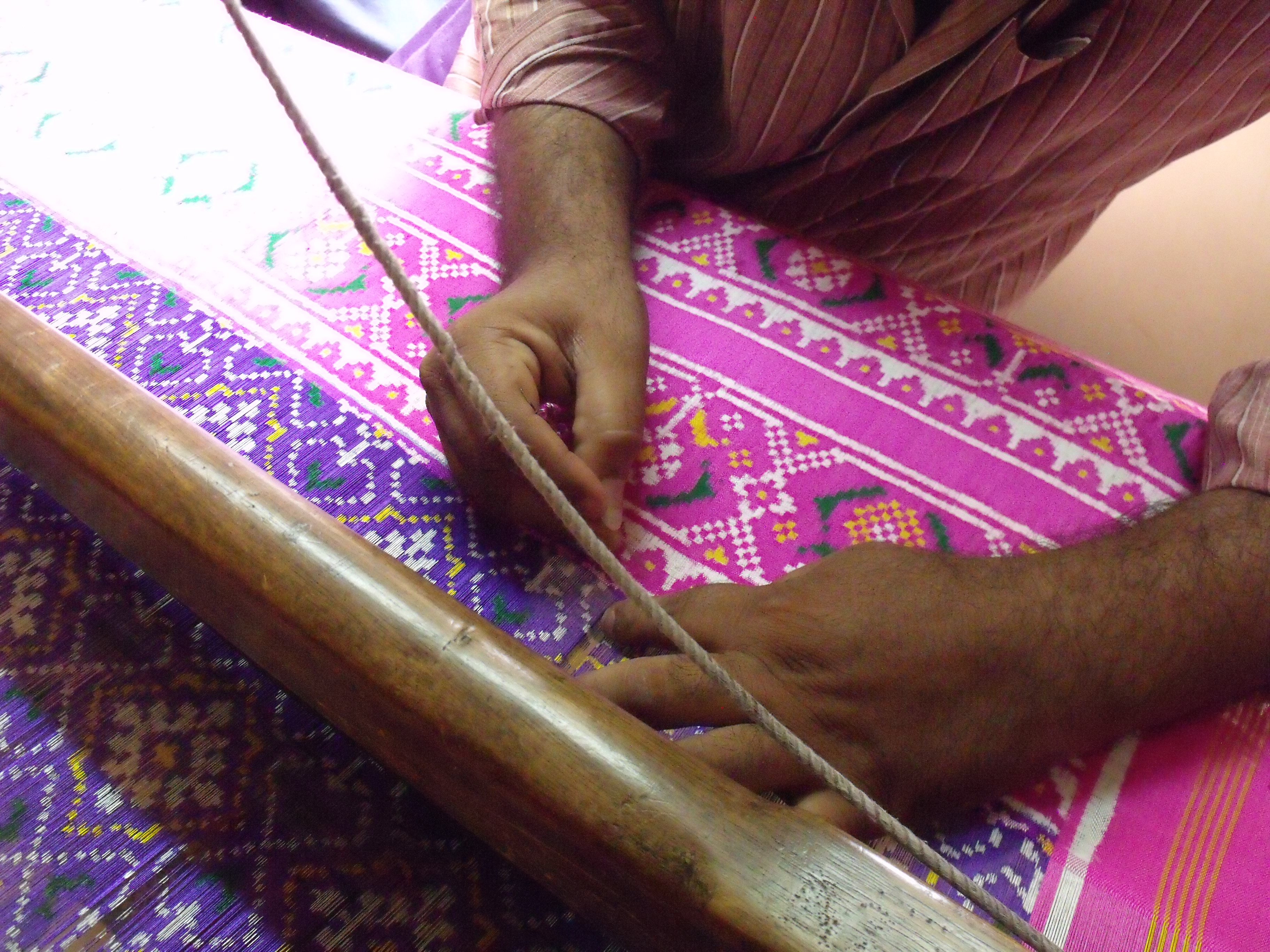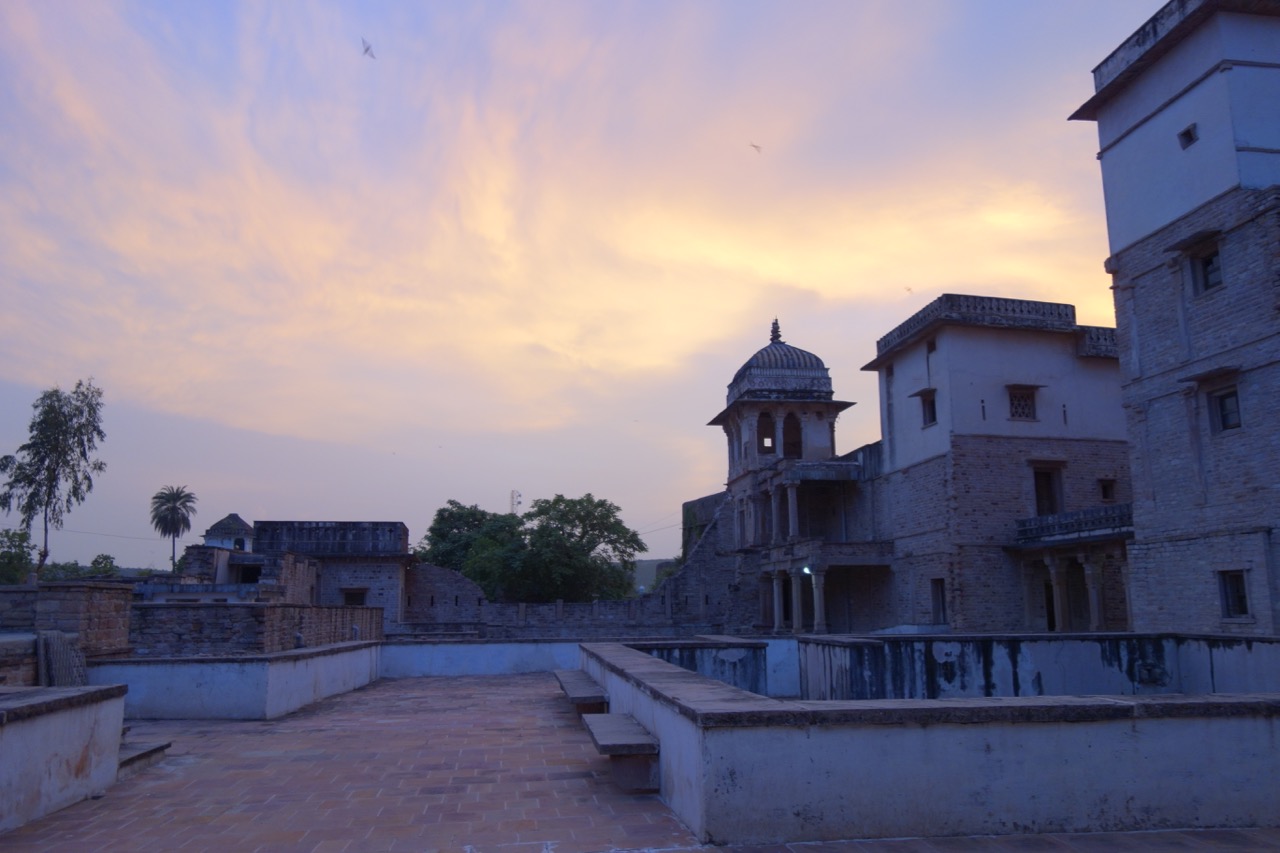This summer has seen a celebration of the history and heritage of Spitalfields in East London in the form of two festivals: Spitalfields Music Festival and the Hunguenot Summer 2015 organised by The Huguenot Society.
I joined a tour run by the Huguenot Society around the streets where the weavers and cloth merchants lived. I was amazed at the many layers of history in one small area – we must have only covered a square half-mile!
The Huguenots were French Prostestant refugees who fled to London and other parts of Britain to escape persecution in France in the 16th century. The first Huguenots arrived in London in 1548. The majority were craftspeople, and settled in different areas depending on their specialisation – gunmakers settled in Soho, Silversmiths produced good for the courts, and a large majority were silk weavers and settled in Spitalfields.
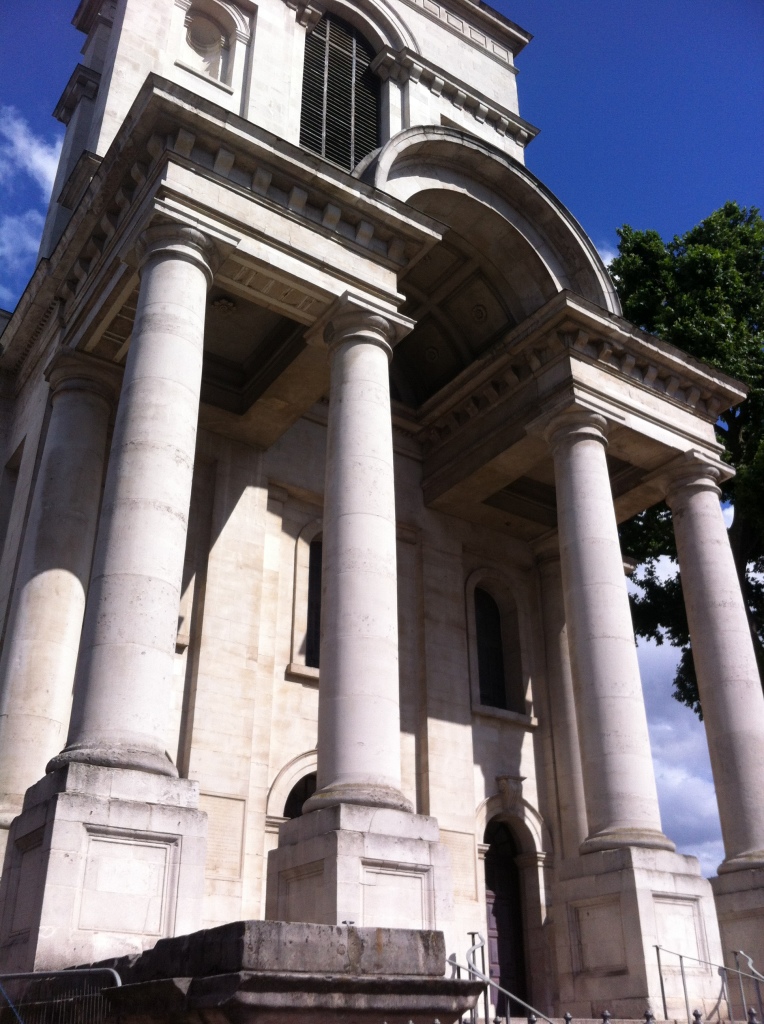
When they first settled, weavers mainly worked from their own home independently, but as the industry grew, so did the number of master weavers who subcontracted work out to the apprentice or journeymen weavers in their homes. Due to the fluctuations in the industry, weavers lived in deep poverty during times of depression, working 6 and a half days a week and paid a pittance. That they never were paid enough to buy their own loom meant they could never escape the exploitative hold of the master weavers. You can spot the master weaver houses by the shutters on the windows – these were fitted to shut out the disturbance of the weavers protesting for better pay and working conditions. If you look closely at the image of two master weavers’ houses below: you can see how large they were – they covered 4 bays, and were detached. Joins in the bricks show how more recently the alleys in between were filled up..
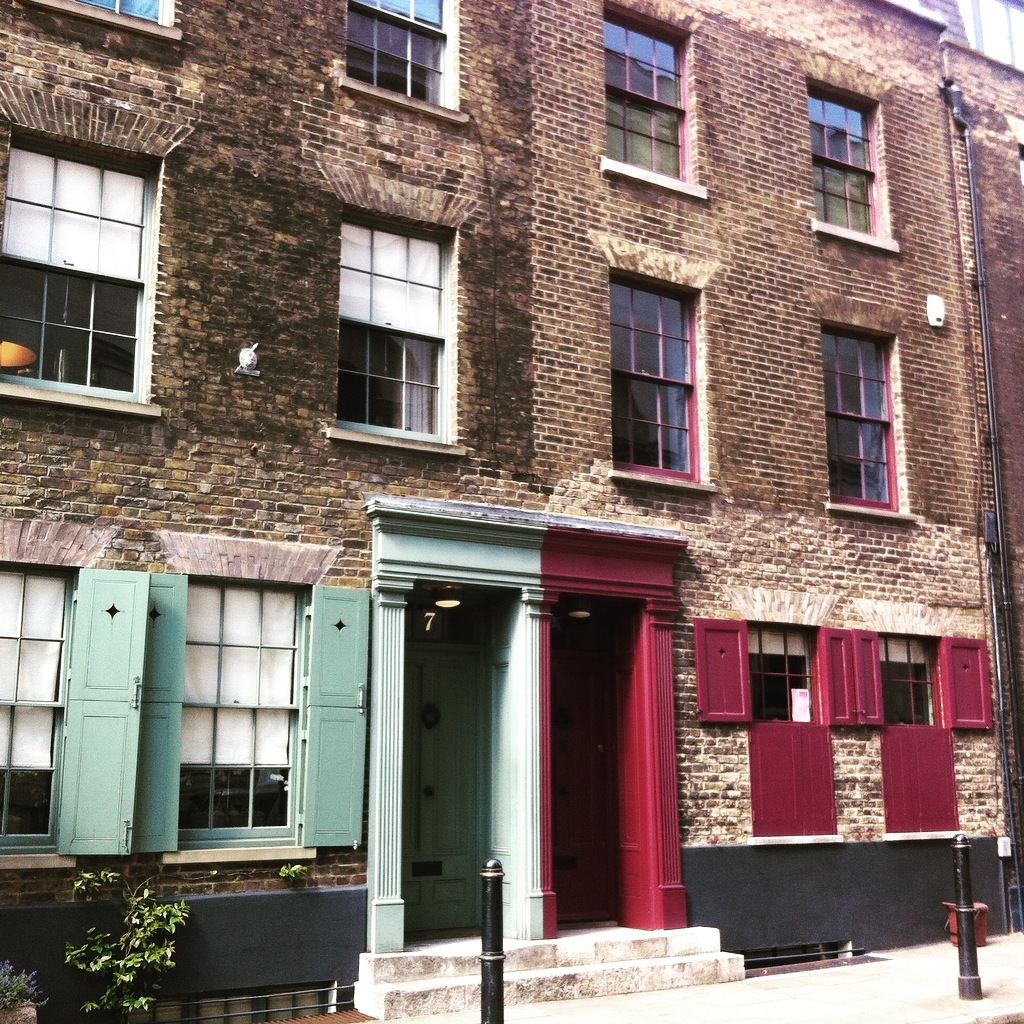
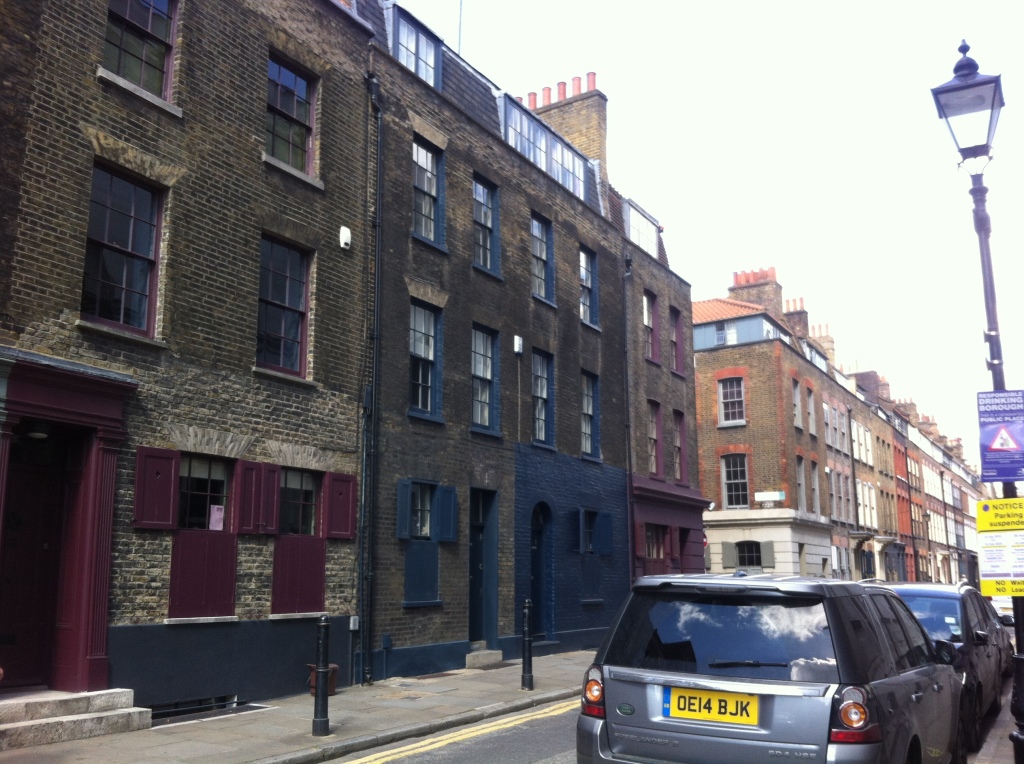
Most weavers specialised in a type of weave. In an earlier post I discussed complex lampas brocaded weaves, a speciality of Spitalfields. Lampas, as well as simpler brocades and damasks used for shawls, women’s gowns and men’s waistcoats, constituted the majority of the production in Spitalfields. During the tour we were shown the house where the fabric woven for a dress worn by Queen Victoria was woven – it was the only place that could achieve the complex technique required.
For patterned designs, draw boys were employed to lift the warp threads required to achieve the design. This painstaking process required intense focus and concentration. It would take a day to weave a yard of fabric. The invention of the jacquard loom in the late 18th century, which used punch cards in place of the draw boy sped up the process. Today mechanised jacquard looms can weave hundreds of metres a day.
Designs were mainly provided by the master weavers, or they came from local designers. Anna Maria Garthwaite was a renowned designer of the Roccoco style floral silks who moved from York to Spitalfields in 1728, and spent three decades successfully creating detailed watercolour designs for the industry. This was a particularly admirable achievement for a woman at the time, in an industry dominated by men.
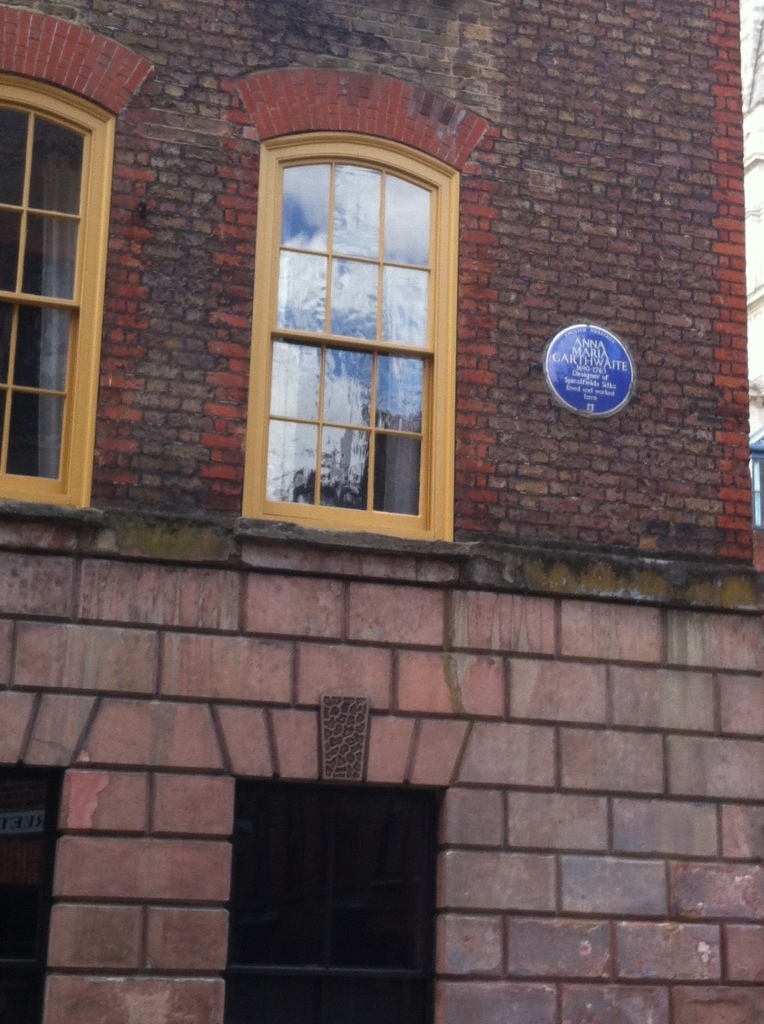
Images of the interior of the house can be found here.
Imports of Indian and French silks were a huge threat to the Spitalfields industry, and lead to the prohibition on the import of foreign woven silks in 1766. Then in 1773, the Spitalfields act was introduced, under which legislation, rates of pay for particular classes of work were agreed by journeymen and masters, and then ratified by magistrates. Lists of prices were published to guarantee the agreed rates of pay. A series of these Acts were passed, and they helped to secure years of relative industrial peace. As fashions moved to less complex patterned fabrics, the weavers moved towards smaller patterns and lighter fabrics, and while these demands brought in lower prices, they kept the industry relatively stable. This was until the repeal of the imports ban in 1824 which meant French imports at cheaper prices almost completely took over the Spitalfield’s market, bringing the industry to collapse. See V&A curator’s Clare Browne’s article for a more in-depth insight into the industry.
Following the decline of silk weaving, other trades began operating in the area such as furniture and boot making and tailoring. The Jami Masjid Mosque on the corner of Fournier street and Brick Lane was first established as a Protestant chapel for the Huguenot community in 1743, then became a Jewish synagogue in the late 19th century, during which time the area was home to many Jewish refugees from Russia and Central Europe. In 1976 the building re-opened as a mosque for the flourishing Bangladeshi community. Many who came from Bangladesh worked in the textile tailoring industry. The building is a symbol of the layers of history and different peoples who have contributed to the history and culture of this region.
